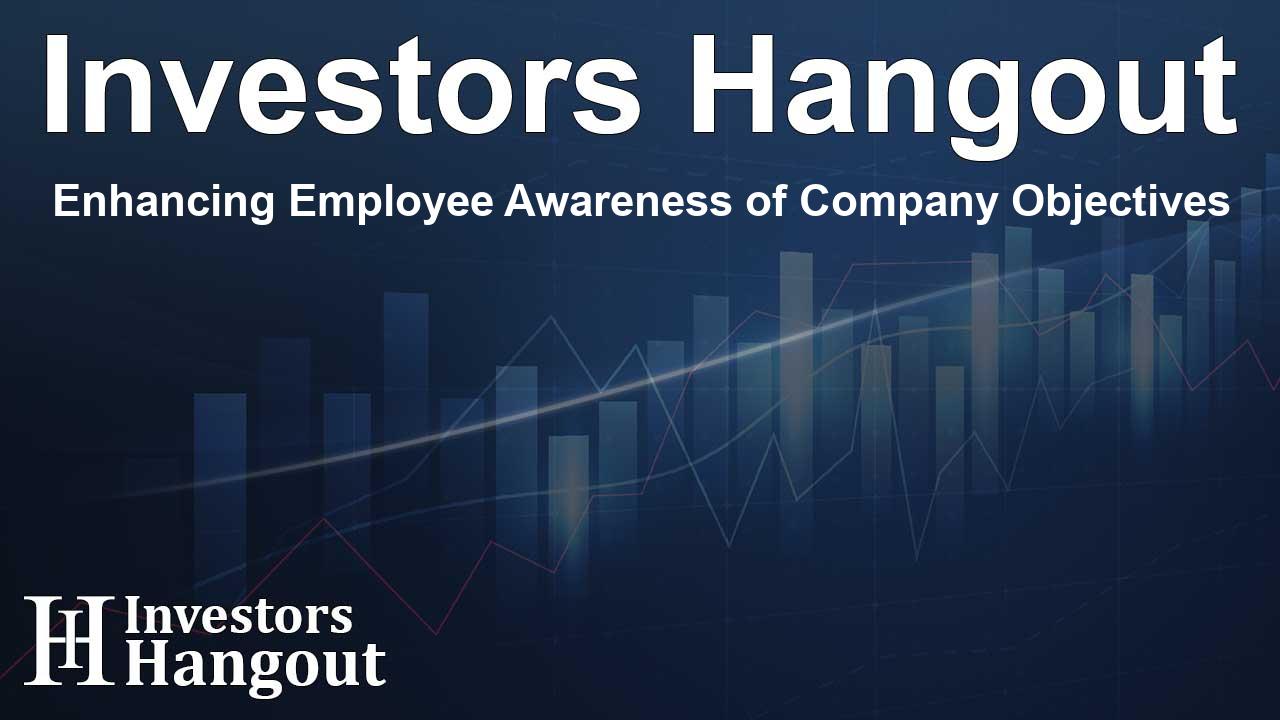Enhancing Employee Awareness of Company Objectives

Understanding the Gap Between Employees and Company Goals
Many organizations today struggle with effectively communicating their core objectives to employees. This disconnect often leads to a situation where nearly 80% of employees are unsure about what they are working towards. According to a recent report released by Slingshot, the work management platform, only a mere 23% of employees feel adequately informed about the company's goals. This is in stark contrast to the 84% of leaders who believe they are articulating their business goals well. The crux of the matter reveals a significant communication gap that can impact productivity and employee morale considerably.
The Impact of Transparency in Work Settings
Slingshot's Digital Work Trends Report highlights essential factors influencing productivity within the workplace. Notably, transparency in company objectives is critical. When employees lack insight into the company's broader goals, it can result in a lack of motivation and confusion over their priorities. Dean Guida, the founder of Slingshot, emphasizes that leaders must consistently share these goals to foster a sense of connection and productivity among employees.
Digital Fatigue: A Modern-Day Challenge
A substantial portion of the workforce experiences digital fatigue, which results from spending an average of eight hours a day on screens. Research indicates that about one-third of workers—34%—feel overwhelmed by their screen time. This phenomenon is linked to decreased productivity, with 41% of teams feeling burnt out due to excessive digital engagement. Furthermore, 18% report not giving tasks their full attention, ultimately deteriorating the quality of their work outputs.
Challenges of Application Overload
Another contributing factor to decreased productivity is application overload. Almost half of the employees surveyed reported using five or more workplace applications daily, with some even using seven or more. This proliferation of apps distracts teams, with 24% indicating that app notifications divert their focus from core tasks. The struggle to manage multiple apps not only hampers efficiency but also leads to increased digital exhaustion.
Generational Differences in Workload Perception
The report also sheds light on how workload perceptions differ across generations. While 70% of employees have experienced feeling overloaded, Baby Boomers—those aged 60 and older—report feeling less pressure compared to younger workers. Data shows 52% of Boomers do not feel overwhelmed, contrasting sharply with 16% of Gen Z and 21% of Millennials, who frequently feel overloaded. Furthermore, Baby Boomers report less digital fatigue compared to 53% of their Gen Z counterparts.
The Push for Work-Life Balance
In today’s fast-paced work culture, employees express a desire for clearer expectations regarding after-hours availability. Around 38% feel obliged to respond to work-related communication outside their scheduled hours. To promote a healthier work-life balance, employees are calling on their leaders to encourage them to disconnect after work, with 67% supporting this idea. Additionally, many prefer that their employers do not expect them to be available after hours.
Driving Productivity Through Engagement
Ultimately, connecting employees to their responsibilities and the business's overall mission is vital for fostering productivity. Guida notes that productivity isn't just a measure of an organization's success but a critical component of business growth. Aligning employees with their work, providing adequate support, and creating an environment for continuous innovation are paramount for success.
Frequently Asked Questions
What is the primary finding of Slingshot's report?
The report reveals that while leaders believe they communicate company goals effectively, a vast majority of employees feel uninformed about those goals.
How does digital fatigue affect employee productivity?
Digital fatigue, caused by excessive screen time, leads to feelings of burnout and distracts employees from focusing on their tasks, ultimately reducing productivity.
What role do workplace applications play in productivity?
The overuse of workplace applications can distract employees, leading to decreased focus and productivity as they struggle to manage multiple platforms.
How do different generations perceive their workload?
Older employees, particularly Baby Boomers, report feeling less overloaded compared to younger generations like Gen Z and Millennials, who experience more pressure and digital fatigue.
What do employees want regarding after-hours work expectations?
Employees desire clearer boundaries regarding after-hours communication and want their leaders to encourage a work-life balance by suggesting they unplug after work.
About The Author
Contact Evelyn Baker privately here. Or send an email with ATTN: Evelyn Baker as the subject to contact@investorshangout.com.
About Investors Hangout
Investors Hangout is a leading online stock forum for financial discussion and learning, offering a wide range of free tools and resources. It draws in traders of all levels, who exchange market knowledge, investigate trading tactics, and keep an eye on industry developments in real time. Featuring financial articles, stock message boards, quotes, charts, company profiles, and live news updates. Through cooperative learning and a wealth of informational resources, it helps users from novices creating their first portfolios to experts honing their techniques. Join Investors Hangout today: https://investorshangout.com/
The content of this article is based on factual, publicly available information and does not represent legal, financial, or investment advice. Investors Hangout does not offer financial advice, and the author is not a licensed financial advisor. Consult a qualified advisor before making any financial or investment decisions based on this article. This article should not be considered advice to purchase, sell, or hold any securities or other investments. If any of the material provided here is inaccurate, please contact us for corrections.
